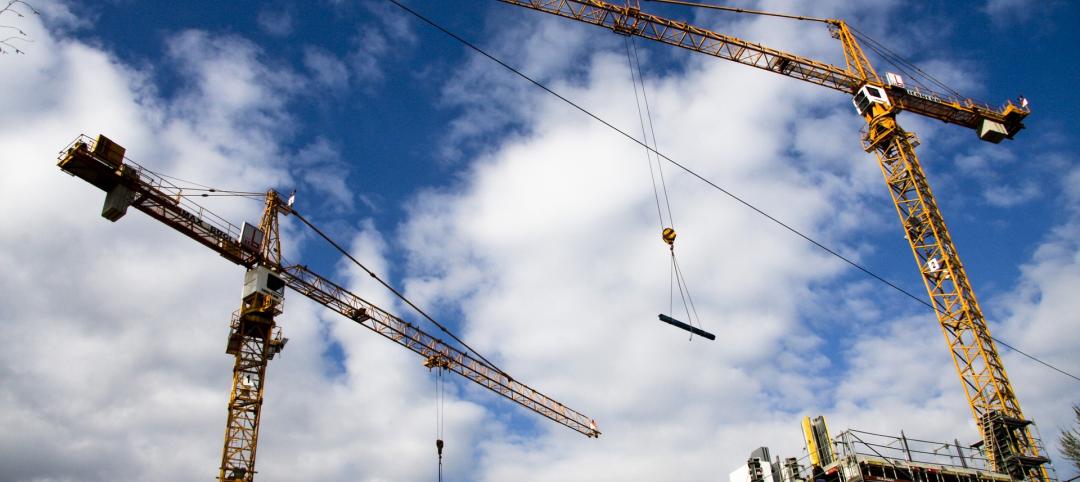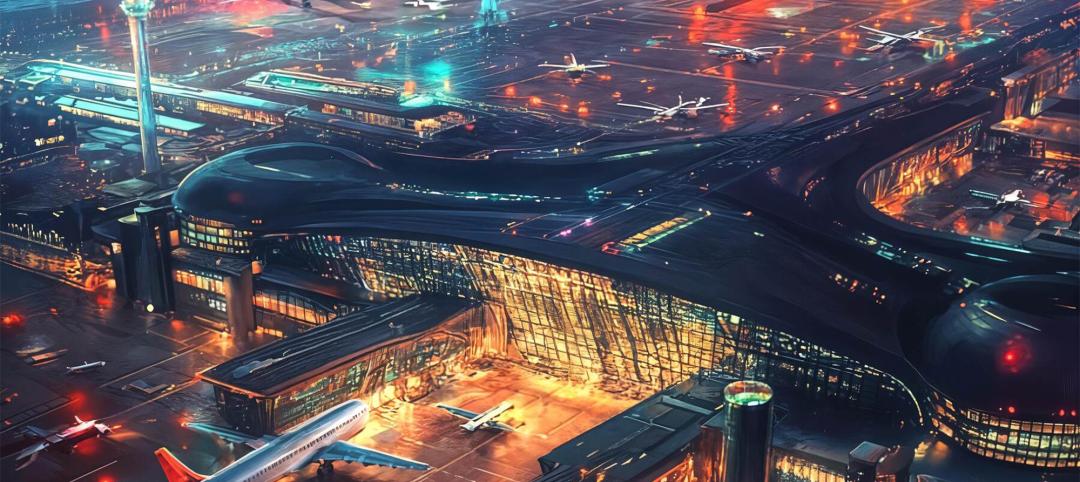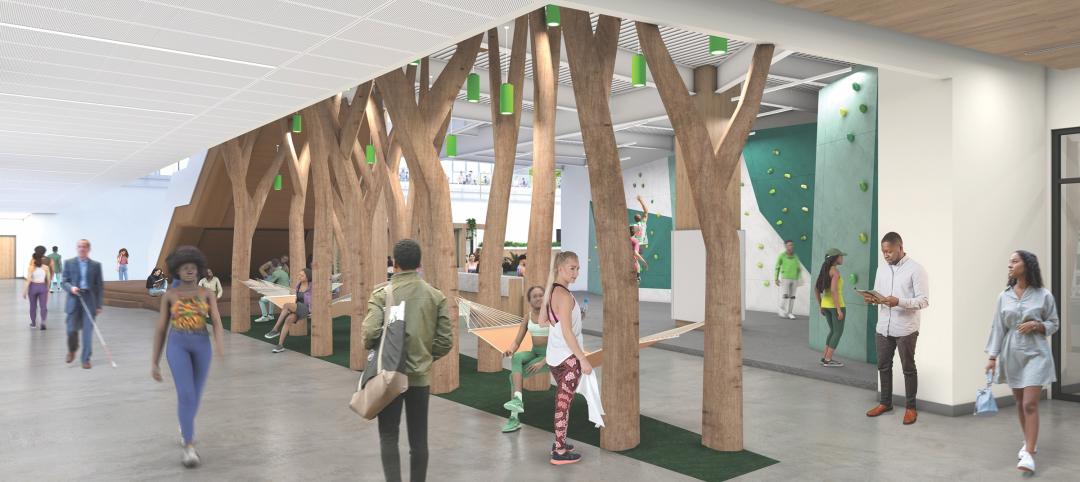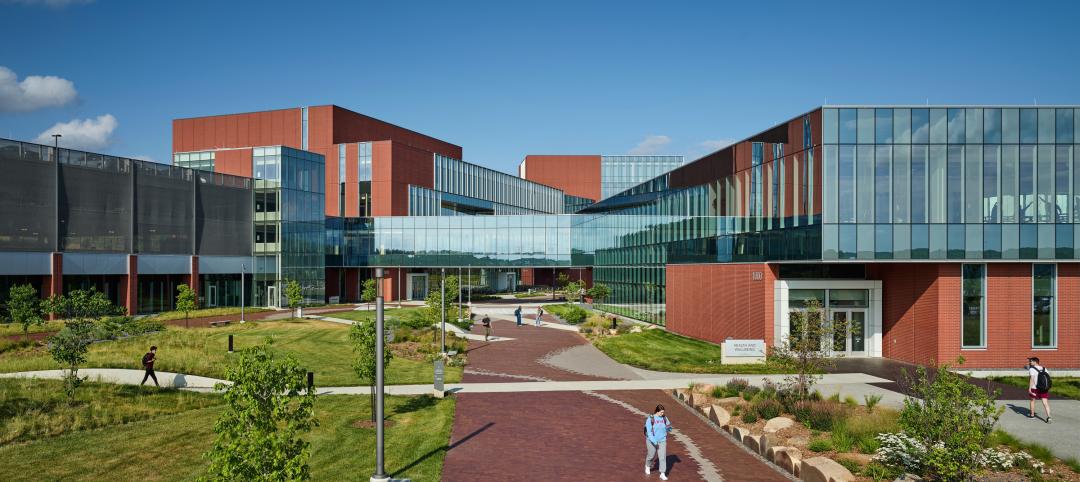Environmentally-sustainable, or “Green,” buildings continue to be firmly on the agenda for real estate owners, developers and corporate owner-occupants. Almost all respondents to the Turner 2010 Green Building Market Barometer expect to incorporate at least some Green features in their next construction project. The potential to reduce energy and operating expenses are the most common drivers for building Green, although many companies are also focused on a broader set of benefits such as increased health and well-being of occupants and the positive impact on brand and corporate reputation. Yet, concerns persist over perceived higher construction costs and the length of the payback period. In addition, respondents continue to look closely at the cost and perceived difficulty of LEED certification.
These are some of the key findings from The Turner Construction Company 2010 Green Building Market Barometer, which is the fifth assessment since 2004 of perceptions about sustainable construction. The 2010 survey gathered the views on Green buildings of 681 executives from a broad range of organizations involved with real estate, including real estate owners, developers and corporate space users, as well as architectural, engineering and construction firms.
The survey polled the participants on the likelihood of undertaking construction or renovation projects; the degree to which companies incorporate Green building features; how companies decide whether to incorporate Green features; and the role of the LEED Green Building Rating system. In addition, for the first time, the survey asked about the extent of commitment to sustainable practices, in general, across organizations.
Key Findings:
Many Companies Expect to Undertake Construction or Renovation Projects
- Among real estate owners, developers, and corporate owner-occupants, 46% of executives said it was extremely or very likely that they would undertake new construction over the next 12 months, while 58% anticipated undertaking a renovation project.
Most Anticipate Incorporating Green Features
- Almost 90% of those executives said it was extremely or very likely that they would incorporate energy efficiency improvements in their new construction or renovation project, while roughly 60% expected to incorporate improvements to water efficiency, indoor environmental quality, and Green materials.
Financial Considerations Most important
- The factors most often rated as extremely or very important when companies decide whether to incorporate Green features were energy efficiency (88%) and ongoing operations and maintenance costs (86%).
- Many companies also considered non-financial factors to be extremely or very important in their decisions to incorporate Green features such as indoor air quality (72%), health and well-being of occupants (72%), and the impact on brand/reputation (67%).
- A payback period of longer than five years for Green features was considered acceptable by 45% % of executives.
Long Payback Period and Higher Construction Costs Pose Obstacles
- Despite the fact that almost half the executives were willing to accept a payback period of longer than five years, roughly two thirds of executives considered the perceived length of the payback period to be an extremely or very significant obstacle to incorporating Green features.
- Roughly two thirds of executives also considered higher construction costs to be an important obstacle to the development of additional Green buildings.
- Half of the executives believed that Green buildings have higher operating and maintenance costs, which they identified as another extremely or very significant obstacle to Green construction.
Views of LEED Certification
- Fifty-three percent of the executives thought it was extremely or very likely that their companies would seek LEED certification if constructing a Green building.
- Executives from real estate owners and corporations with portfolios of one million square feet or more were more likely to seek LEED certification, with 64% saying it was extremely or very likely.
Broad Commitment to Sustainable Practices
- Ninety percent of executives said their companies were at least somewhat committed to following environmentally sustainable practices in areas beyond their real estate portfolios, including 56% of executives who said they were extremely or very committed.
- The reasons most often cited as extremely or very important for companies to commit to following sustainable practices were two financial factors—cost savings (64%) and customer requirements (59%)—and two non-financial factors—impact on brand/reputation (64%) and the belief that “it’s the right thing to do” (63%).
Almost all executives continue to consider incorporating Green features when they undertake a construction or renovation project. Energy efficiency measures were the features that executives would most frequently incorporate in their projects. Investments in improving energy efficiency in their buildings result in substantial savings through lower energy costs and reduced operations and maintenance costs. In addition, most executives would also include Green building features to improve water efficiency and indoor air quality and would employ the use of green materials in their projects. These Green building features provide a wide array of additional benefits that include more satisfied employees, improved health and well-being of occupants, and the positive impact on a company’s corporate brand and reputation.
Despite Economic Conditions, Many Owners Planning to Build
Turner’s 2010 Green Building Survey was conducted in an environment of continuing weakness in the economy, following the financial crisis and economic downturn that began in 2008. Despite these market conditions, when asked about their likelihood to undertake new construction or renovation projects over the next 12 months, many executives who worked for real estate owners, developers, or corporate owner-occupants indicated that they expected to do so. Among these executives, 46% thought it was extremely or very likely that their company would undertake new construction over the coming year, while 58% thought it was likely they would undertake a renovation project. Real estate owners and corporate owner-occupants with real estate portfolios of one million square feet or more were even more likely to anticipate undertaking projects over the next 12 months, with 52% saying they were extremely or very likely to undertake new construction and 73% saying the same about renovation projects.
Related Stories
Construction Costs | Oct 16, 2024
Construction Crane Index: Most major markets’ crane counts increase or hold steady in third quarter
Rider Levett Bucknall’s (RLB’s) latest Crane Index and Quarterly Cost Report shows continued decreasing cost inflation and crane counts increasing or holding steady in 10 of the 14 major markets it surveyed. The national average increase in construction costs was 1.07%, the lowest it’s been in the last three years.
AEC Tech | Oct 16, 2024
How AI can augment the design visualization process
Blog author Tim Beecken, AIA, uses the design of an airport as a case-study for AI’s potential in design visualizations.
University Buildings | Oct 15, 2024
Recreation and wellness are bedfellows in new campus student centers
Student demands for amenities and services that address their emotional and mental wellbeing are impacting new development on college campuses that has led to recreation centers with wellness portfolios.
Higher Education | Oct 14, 2024
Higher education design for the first-gen college student
In this Design Collaborative blog, Yogen Solanki, Assoc. AIA, shares how architecture and design can help higher education institutions address some of the challenges faced by first-generation students.
Performing Arts Centers | Oct 10, 2024
Studio Gang's performing arts center for Hudson Valley Shakespeare breaks ground
A new permanent home for Hudson Valley Shakespeare, a professional non-profit theater company, recently broke ground in Garrison, N.Y. The Samuel H. Scripps Theater Center includes a 14,850 sf performance venue that will serve as a permanent home for the theater company known for its sweeping open-air productions of classics and new works.
Sustainable Design and Construction | Oct 10, 2024
Northglenn, a Denver suburb, opens a net zero, all-electric city hall with a mass timber structure
Northglenn, Colo., a Denver suburb, has opened the new Northglenn City Hall—a net zero, fully electric building with a mass timber structure. The 32,600-sf, $33.7 million building houses 60 city staffers. Designed by Anderson Mason Dale Architects, Northglenn City Hall is set to become the first municipal building in Colorado, and one of the first in the country, to achieve the Core certification: a green building rating system overseen by the International Living Future Institute.
3D Printing | Oct 9, 2024
3D-printed construction milestones take shape in Tennessee and Texas
Two notable 3D-printed projects mark milestones in the new construction technique of “printing” structures with specialized concrete. In Athens, Tennessee, Walmart hired Alquist 3D to build a 20-foot-high store expansion, one of the largest freestanding 3D-printed commercial concrete structures in the U.S. In Marfa, Texas, the world’s first 3D-printed hotel is under construction at an existing hotel and campground site.
University Buildings | Oct 9, 2024
Des Moines University Medicine and Health Sciences opens a new 88-acre campus
Des Moines University Medicine and Health Sciences has opened a new campus spanning 88 acres, over three times larger than its previous location. Designed by RDG Planning & Design and built by Turner Construction, the $260 million campus features technology-rich, flexible educational spaces that promote innovative teaching methods, expand research activity, and enhance clinical services. The campus includes four buildings connected with elevated pathways and totaling 382,000 sf.
Student Housing | Oct 9, 2024
University of Maryland begins work on $148 million graduate student housing development
The University of Maryland, in partnership with Campus Apartments and Mosaic Development Partners, has broken ground on a $148.75 million graduate student housing project on the university’s flagship College Park campus. The project will add 741 beds in 465 fully furnished apartments.
Healthcare Facilities | Oct 9, 2024
How healthcare operations inform design
Amanda Fisher, Communications Specialist, shares how BWBR's personalized approach and specialized experience can make a meaningful impact to healthcare facilities.
















